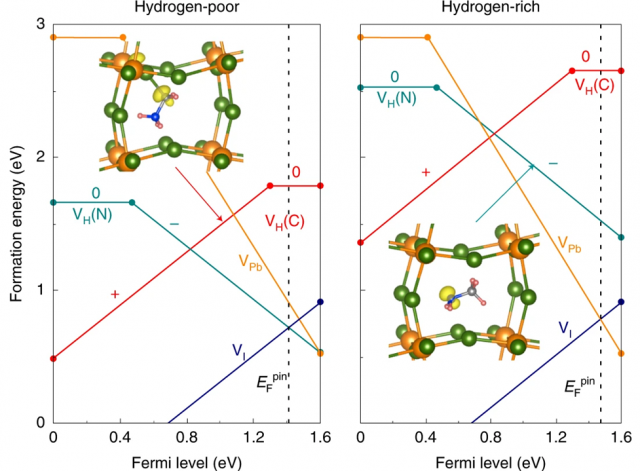Work on Hybrid Perovskites Published in Nature Materials
Work led by Dr. Xie Zhang highlights hydrogen vacancies as sources of non-radiative loss in perovskite solar cells.
Dr. Xie Zhang's contributions to the field of research in hybrid halide perovskites---in this case, methylammonium lead iodide, or MaPbI3---continued with his recent publication in Nature Materials, on which Dr. Jimmy Shen and Mark Turiansky were coauthors. The paper was one of the first to examine defects on the organic methylammonium cation in the hybrid perovskite lattice, and it showed that neglecting this species has been a significant oversight in the literature, as hydrogen vacancies serve as highly efficient sites for non-radiative recombination. In contrast, Zhang showed that hydrogen vacancies in formamidinium lead iodide (FaPbI3), another candidate solar cell absorber, are much less costly, providing new justification for the use of FaPbI3 in devices.
In a corresponding News and Views piece, Leeor Kronik and Andrew Rappe said of the work:
...[T]he work by Zhang and colleagues is an elegant demonstration of how far first-principles calculations have come. Not only have they matured to a point where they are used regularly to interpret experimental data, they are increasingly being used to predict experimental results and to guide research and development efforts.
